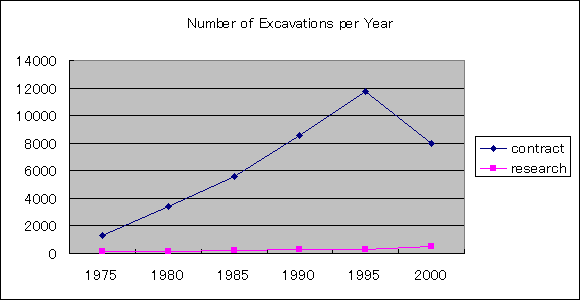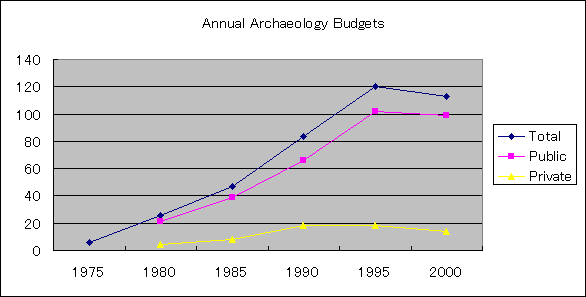
| Home | Japanese Archaeology |
last revised: February 15, 2003 |
by Charles T. Keally
|
prehistoric periods Palaeolithic Jomon Yayoi Kofun
historic periods Fieldwork Opportunities |
Japan has about 370,000 to 440,000 registered archaeological sites, or at least one site for every square kilometer of the country. But nearly 70% of the land is steep mountains, so the density of archaeological sites is extremely high on the remaining 30% of usable land. A few of these sites are dated tentatively as old as 50,000 years, but most are younger than 35,000 years. The registered sites, however, include many from as recent as the 19th century, and many archaeologists now routinely excavate and record sites as young as the middle 20th century.
|
Note that until November 2000, the preceding paragraph read in part: "Some of these sites are dated as old as 600,000 years...." The exposure of the so-called Early Palaeolithic Fabrication Hoax on November 5, 2000, and the subsequent re-investigation of many of the sites older than about 35,000 years ago, has led to the elimination of almost all sites in Japan claimed to be Early or Middle Palaeolithic. |
There are over 7,000 specialists (about two-thirds archaeology majors) employed in some way in field work in the country, and there are an estimated 20,000 to 50,000 regular field workers (mostly middle-aged housewives) employed on the nearly 8,000 large and small excavations that are conducted each year. This number is down from the more than 11,000 excavations in 1996 but up from the less that 7,000 in 1998 and 1999. Most of these excavations are contract projects; only about 400 or so research projects are conducted in any one year.

Budgets for the contract projects often are huge, some to the point of being seemingly limitless. The average amount of money spent on archaeology in each of Japan's 47 prefectures in 2000 was something on the order of about 2.4 billion yen, for a national total of about 113 billion yen. This is down from a peak of 132 billion yen in 1997, but far larger than the 25.5 billion yen spent in 1980 and the 5.7 billion yen in 1975. The 113 billion yen spent in 2000 included 99 billion yen from public construction projects and 14 billion yen from construction by private organizations.

Over 2,000 excavation reports are published each year. These range from small reports to multivolume works of hundreds of pages, detailing every one of thousands -- or tens of thousands -- of finds. These publications alone provide a tremendous base for research on Japan's past, without getting involved directly in excavation work. Only a small part of all this work ever reaches the international publications, however, and most of it is closed to anyone who does not read Japanese well. There is a great need to have far more archaeologists fluent in foreign languages and in Japanese to get involved directly in the work here. And there is an equally great need for ideas from the outside to come into Japanese archaeological research.
Japanese archaeologists recognize, in general terms, four prehistoric and four historic periods. Each of these is further divided into two or more subperiods, which in turn are divided into a number of phases. In the following pages, I have tried to give brief overviews of the eight prehistoric and historic periods studied by Japanese archaeology.
| PREHISTORIC ARCHAEOLOGICAL PERIODS | ||
|---|---|---|
| Japanese Palaeolithic | 50/35,000-13/9,500 years ago | |
| Jomon | 13/9,500-2,500 years ago | |
| Yayoi | ca. 500 B.C.-A.D. 300 | |
| Kofun (Proto-historic) | A.D. 300-700 | |
| HISTORIC ARCHAEOLOGICAL PERIODS | ||
| Nara-Heian (Ancient) | A.D. 710-1185 | |
| Medieval | A.D. 1185-1600 | |
| Edo (Early Modern) | A.D. 1600-1868 | |
| Meiji (Modern) | A.D. 1868-1912 | |
There are only a few good books in English on Japanese prehistory in general or on the specific periods. There are a lot of books in English on Japanese history, but these are based largely on documents and say little about historic archaeology in Japan. I have included some of the relevant English-language bibliography with each of the sections dealing with individual periods. The following are a few publications in Japanese on Japanese archaeology in general that might be interesting.
|
|